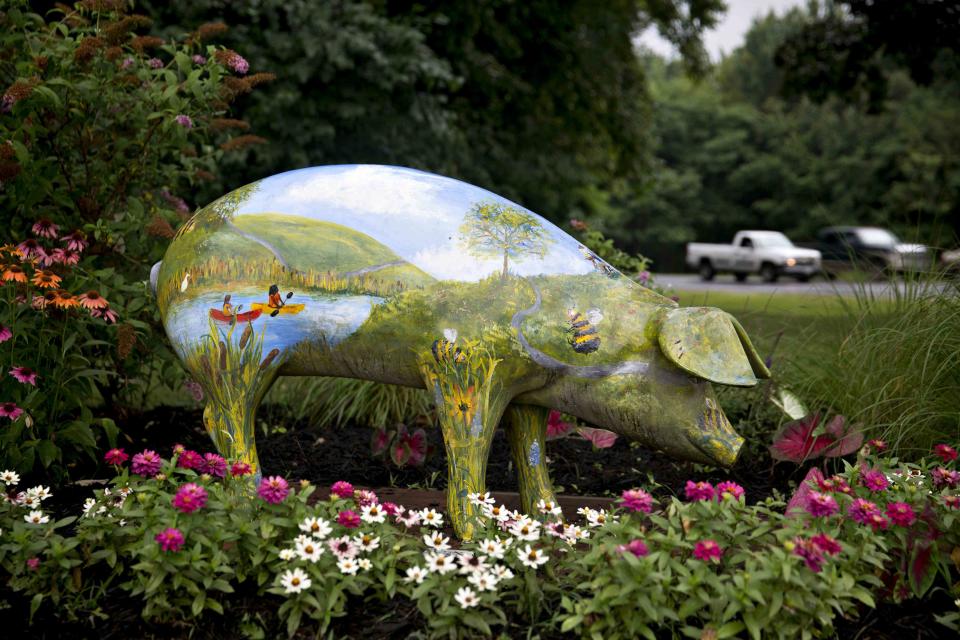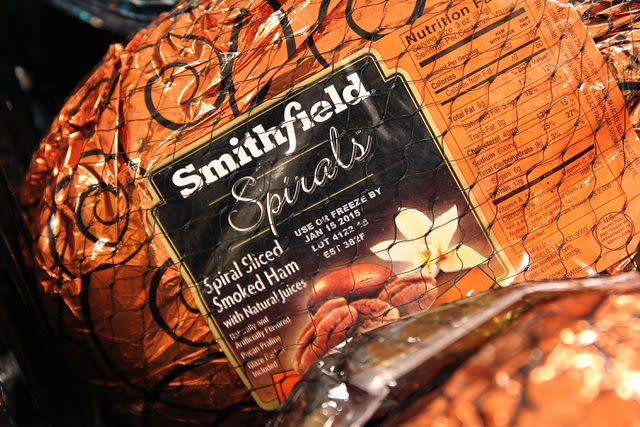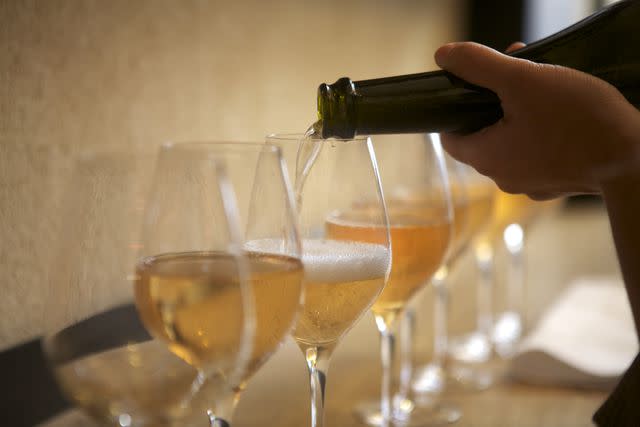The Fascinating Connection Shared By Smithfield, Virginia, And Champagne, France
Blow away your dinner companions the next time you serve ham by sharing this fun piece of food trivia.

Bloomberg /Contributor/Getty Images
Geographically, Smithfield, Virginia, and Champagne, France, are 3,969 miles apart. But the language, accent, traditions, history, style, and culinary landscape make it feel like these two cities are pretty much worlds away from each other.
After researching everything you need to know about Smithfield ham, we discovered one surprising factor shared by Champagne and Smithfield, though. Read on for the answer, plus more details about what makes each city’s signature product so special.
Smithfield, Virginia
In case it wasn’t a fixture on your Southern holiday table, Smithfield ham is one type of country ham that’s made in a very specific way and in a very specific location.
According to Virginia law, Genuine Smithfield hams (capital “S”) must be processed, treated, smoked, aged, and dry-salt cured for 6 months or more within the corporate town limits of Smithfield, Virginia. One Southern Living staff member says that this section in the Code of Virginia law is so well-known in and around Smithfield, “most Virginia residents know by heart.”
“No person shall knowingly, label, stamp, pack, advertise, sell, or offer for sale any ham, either wrapped or unwrapped, in a container or loose, as a genuine Smithfield ham unless such ham be a genuine Smithfield ham as defined in § 3.2-5419.” —Code of Virginia

Paul Morigi /Stringer/Getty Images
We’d be willing to wager that few people outside of state limits are familiar with the intricacies, and we’re familiar with some outsiders who consider all country ham brands about the same. But Smithfield residents would beg to differ. They’re so proud of its Genuine ham “recipe” and technique, area brands that meet these legal qualifications differentiate themselves from the rest of their pork peers with the capital “S.”
Related: 39 Leftover Ham Recipes To Feed The Whole Family
Champagne, France
Flying over to Europe, the French government established appellation d’origine contrôlée (AKA controlled designation of origin or AOC) in 1935 to declare rules about the process to make French products like wine, spirits, and other agricultural products. These specifications are so stringent, the French National Institute of Origin and Quality (INAO), has the authority to perform inspections to ensure that all who make specific claims are actually living up to their very specific names.
According to the INAO, "an AOC area is born of an alliance between the natural environment and human ingenuity. From that alliance comes an AOC product with unique, inimitable characteristics, a product so different that it complements rather than competes with other products, possessing a particular identity that adds further value."

Sound familiar? The lawmakers and locals in Smithfield and Champagne share the same goal with Smithfield ham and Champagne. To qualify as a Champagne (rather than champagne or sparkling wine), a wine must be not only made with grapes grown in the Champagne region of France, but it must also have:
A recipe that includes pinot meunier, pinot noir, chardonnay, pinot gris, pinot blanc, petit meslier, and/or arbane grapes.
Grapes that are pressed in a specific way.
Secondary fermentation (the step that yields the carbonation) in the bottle.
Related: 4 Types Of Sparkling Wine And How To Serve Them
So where does that leave other bubbly wines? Depending on the grapes featured, the technique involved, and the location it’s made in, the vino earns a new name. Spanish winemakers create cava, Italians produce prosecco, Austrians and Germans sell Sekt, Portuguese sip on espumante, and some other French winemakers offer cremant. Anything made in America or other regions of the world—save for a few “California Champagnes” that have their names grandfathered through U.S. regulations—should be labeled as champagne with a lowercase “c” or sparkling wine.
The More You Know
Bubbly and baked ham are very different products, true. But the next time you uncork a bottle or slice some Smithfield ham to stack atop biscuit halves, it will now have new meaning. The stringent requirements that both Genuine Smithfield hams and Champagne wine have to meet to earn their brand names ensure that each offers “terroir” as they say in the wine world, or a real taste of the place.
For more Southern Living news, make sure to sign up for our newsletter!
Read the original article on Southern Living.

